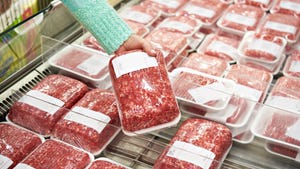Opinion: Where Will Public Research Dollars Come From?
University researchers comment on dwindling support for public research in animal production.
November 18, 2011

The modern age of cattle feeding began in the 1960s and '70s, when many of the leaders in animal science academia were rooted in production agriculture. Because of this intersection of the ag background of academic researchers and the novel problems arising throughout the growing feedlot industry, pioneering production research was initiated at the university level, which the animal production industry eagerly absorbed and adopted. Funding for this research was largely provided by state and federal grants, with supplemental research dollars provided by pharmaceutical industry grants to conduct research required for approval of products by the FDA.
Today, state and federal dollars have dwindled in production/management research and have been replaced with mega-grants for food safety and environmental issues. These research topics are very important to the sustainability of production opportunities; however, funding for production management is critical to interface with basic science.
The pharmaceutical industry has also dramatically changed during the last 25 years. Consolidation and acquisitions have altered the type of funding available for public information. As with the pharmaceutical industry, the confined cattle industry has also consolidated, with many of the large cattle-feeding operations creating in-house research facilities. This explosion of in-house, corporate research for product testing has placed the results in the hands of the pharmaceutical companies for distribution. The dissemination of this information is typically regulated by marketing professionals to promote sales.
In personal communications with decision makers for the three major pharmaceutical companies, it appears that over 90% of their production research dollars are spent on private research. The advantage of this approach for the companies is that they can attempt to influence product buying and control the outcome of the research. This might be a very effective marketing tool, but it lets down the cattle industry as a whole. The knowledge gained from such research is held closely by the large corporate cattle feeders as a competitive edge. Moreover, negative results are often not released for public review.
Large, in-house research facilities certainly have a place in the industry and can do several types of research much more effectively than smaller, public institution facilities. For example, large pens of 100 animals or more can provide information on cattle social and behavioral interactions, greater sensitivity in measuring changes in carcass quality, metabolic dysfunction, and meta-analysis of large data sets.
The advent of corn byproducts has changed feeding practices dramatically over the last 25 years. How to best formulate rations has become an increasing important question, and the public institutions are trying to catch up with industry needs. Historically, the simple questions related to basic feeding and production issues are once again relevant. How much fat can I or should I add to a diet, what flake weight should I use with high levels of corn byproducts in the diet, or even how much protein is too much?
In the not-too-distant past, there were open discussions of these topics by leading industry cattle nutritionists from both the private and public sector. To a great extent, this has been curtailed in the interest of preserving a perceived competitive edge. Even universities are questioning the relevance of NRC values for feedstuffs. These are not simple questions, as production interactions with feedstuffs are recognized. We aren't condemning this practice, only stating that less information is available for the public domain.
To gain unfiltered information for public consumption, the public institutions must strive harder for cooperative research with the leading cattle feeders and the pharmaceutical industry. A logical approach is to have the cattle feeders and pharmaceutical industry technical specialists help delineate the important questions that need to be addressed and the work to address these needs in a manner that will make the results publically available.
The balance of competitive edge vs. greater knowledge from outside sources is fundamental to the ultimate success and long-term health of the industry. Within academia, at select public institutions, there are those who have both the ability and the desire to contribute fundamental, production-oriented information to the public forum, which can subsequently be used to increase the competitive edge for those with the ability to apply this information.
Information alone provides little advantage. The advantage goes to those with the ability and foresight to put new knowledge into practice. Creating a healthy partnership between academia and industry is key to maximizing this potential as an industry.
Current students are the future industry leaders who will sustain the cattle industry. We need to instill an understanding of production systems in these students to allow them to become an asset to the industry. Whether their next position is in industry, the government, or the university system, a core understanding of production principles is paramount.
Michael Hubbert, PhD, professor and superintendent, New Mexico State University Clayton Livestock Research Center
Michael Galyean, PhD, Thornton Distinguished Professor and Paul Whitfield Horn Professor, Texas Tech University.
Chris Reinhardt, PhD, Kansas State University Extension feedlot specialist.
Robbi Pritchard, PhD, Distinguished Professor, South Dakota State University.
You May Also Like
.png?width=300&auto=webp&quality=80&disable=upscale)


